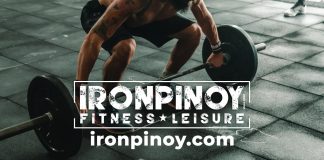Last Updated on June 14, 2024
Working out has a way of turning into a juggling act. Between remembering last week’s weights, navigating busy gym spaces, and keeping up with proper form, it’s easy to feel overwhelmed. And when that happens, common workout mistakes sneak in, derailing progress and risking injury. No one’s perfect, and that’s okay—but being mindful of these common missteps can help you stay on track.
1. Neglecting a Proper Warm-Up
The warm-up: it’s one of the simplest yet most overlooked steps in a workout. Skipping or rushing through it can increase your injury risk and limit your performance. Proper warm-ups should be tailored to your workout type and intensity, preparing muscles and joints for what’s to come.
- Why Warm-Ups Matter: When muscles are cold, they’re tight and prone to strains or tears. Warming up increases blood flow, allowing your muscles to expand and contract smoothly.
- Dynamic vs. Static Stretching: Research favors dynamic stretching, which involves movement (like leg swings or arm circles) that mimic the exercises in your workout. Static stretching (holding a stretch for several seconds) is better saved for post-workout, as it’s less effective for preparing muscles before lifting.
- Pro Tips for an Effective Warm-Up:
- Focus on joint mobility (especially if you’re lifting heavy).
- Increase your heart rate gradually with activities like jump rope or bodyweight exercises.
- Keep it brief (5–10 minutes is ideal) but specific to your workout.
2. Improper Form: The Foundation of Safe Lifting
Poor form doesn’t just diminish your progress—it actively invites injury. Form ensures you’re targeting the intended muscles and staying safe.
- Why Form Matters: Correct form distributes load evenly, reducing unnecessary stress on joints and stabilizing muscles. With poor form, you’re more likely to strain muscles not meant to bear the weight.
- Common Form Mistakes and Fixes:
- Rounded Back in Deadlifts: A rounded back places too much stress on the spine. Keep your back straight by engaging your core and keeping the barbell close to your shins.
- Partial Reps: When weights are too heavy, people often end up doing partial reps, especially in squats or bench presses. Lighten the load and focus on completing the full range of motion.
- Compensating with Other Muscles: Watch for exercises where other muscle groups try to “help out.” For instance, in bicep curls, keep elbows stationary to avoid engaging shoulders.
- Using a Mirror or Seeking Guidance: A mirror can help with form checks, but getting a trainer to help fine-tune your form, especially for complex lifts, is invaluable.
3. Poor Exercise Selection
Exercise selection is the backbone of a balanced workout plan. Choosing the right exercises, in the right order, helps you hit your fitness goals more effectively.
- Compound vs. Isolation Exercises: Compound exercises (like squats or bench presses) work multiple muscle groups and should typically come first in a workout when you’re freshest. Isolation exercises (like bicep curls) focus on one muscle group and are best saved for the end.
- Balancing Muscles for a Complete Workout:
- For Upper Body: Avoid doing multiple shoulder or arm exercises in a row. For instance, if you’re bench pressing, avoid directly following it with shoulder presses.
- For Lower Body: Combine exercises that target different areas, like squats (for the quads) and deadlifts (for hamstrings and glutes).
- Scheduling Rest and Recovery: Muscles need time to repair between workouts. Focus on alternating muscle groups, and make sure you’re taking at least one full rest day per week to prevent overuse injuries and burnout.
4. Overloading Without Progression
It’s natural to want to increase weights quickly, but progressing too fast can backfire, leading to poor form and injury.
- Gradual Progression Principle: Start with weights that allow you to perform each rep with proper form. A good rule of thumb is to add no more than 5% weight each week.
- When to Increase Weight: Only increase weight when you can comfortably perform all reps without struggling. Another option is to increase reps or sets rather than the weight itself.
- Adding Variation Instead of More Weight: If your workout has hit a plateau, try adding new exercises, switching grip positions, or using different equipment to maintain progress.
5. Skipping Core Strengthening Exercises
A strong core is vital to almost every workout and movement, but it’s often overlooked. Without core strength, other exercises (from deadlifts to rows) suffer.
- Why Core Work Matters: The core stabilizes the body, aiding balance and preventing injury. A strong core improves performance in compound lifts and even cardio.
- Core-Strengthening Exercises to Include:
- Planks: Excellent for core stability.
- Leg Raises: Engages the lower core.
- Russian Twists: Targets obliques and improves rotation control.
- Using Core Activation During Other Exercises: In addition to isolated core exercises, practice engaging your core during exercises like squats or overhead presses to enhance stability.
6. Ignoring the Importance of Rest
Many people underestimate the role rest plays in building strength and muscle. Overworking without adequate rest leads to diminished gains and increases injury risk.
- Why Rest is Non-Negotiable: Muscles repair and grow during rest. Without enough recovery time, you risk burnout, overuse injuries, and decreased motivation.
- Signs You Need More Rest: Persistent muscle soreness, lack of motivation, and hitting workout plateaus can all indicate that you’re not resting enough.
- Scheduling Rest for Optimal Performance: Plan at least one full rest day per week, and try a “deload week” (using lighter weights or fewer reps) every 4–6 weeks.
7. Not Setting Clear Goals or Tracking Progress
Going to the gym without a clear purpose can leave you spinning your wheels. Tracking progress helps keep motivation high and allows you to set new, achievable goals.
- Types of Goals: Define whether you’re aiming for strength, endurance, muscle gain, or fat loss, and tailor your routine accordingly.
- Methods for Tracking Progress:
- Using a Workout Journal: Record exercises, sets, reps, and weights. It provides a sense of accomplishment and a clear view of progress.
- Taking Progress Photos: Body changes happen slowly, but photos can reveal progress over time.
- Monitoring Energy Levels and Overall Strength: Pay attention to how workouts feel; over time, increased stamina is an indicator of improved fitness.
8. Relying Solely on Machines Over Free Weights
Machines can be helpful for beginners, but relying solely on them can limit the development of stabilizing muscles and core strength.
- Pros of Free Weights: They engage multiple muscle groups, build balance, and mimic natural movement patterns.
- Best Machine-Free Alternatives: When possible, replace machine exercises with free-weight alternatives, such as:
- Leg Press to Squat: Improves balance and coordination.
- Seated Row to Barbell Row: Engages core and back stabilizers.
- Lat Pulldown to Pull-Ups: Builds upper body strength while engaging the core.
9. Following a Cookie-Cutter Workout Plan
Not all workout plans are created equal, and following a generic plan might not be the best fit for your unique goals, experience level, or body type.
- Finding What Works for You: Tailor workouts based on your specific goals (e.g., strength, hypertrophy, or endurance) and fitness level.
- Benefits of Personalizing Your Plan: Custom plans address your strengths and weaknesses, keep workouts exciting, and help prevent burnout.
- Tracking and Adjusting: Monitor how each routine feels and adjust based on your progress and feedback from your body.
10. Ignoring Nutrition as Part of the Equation
Workouts are only half the battle. Proper nutrition fuels your body, aids recovery, and supports muscle growth.
- Macronutrient Balance: Depending on your goal, balance protein, carbs, and fats to meet your needs. Generally, protein supports muscle repair, carbs provide energy, and fats are essential for hormone production.
- Eating for Specific Goals:
- Building Muscle: Focus on a slight caloric surplus with adequate protein intake.
- Fat Loss: Caloric deficit with high-protein, low-carb meals helps preserve muscle.
- Hydration and Pre/Post-Workout Nutrition: Staying hydrated and eating the right pre/post-workout foods improves performance and recovery.
Working out effectively isn’t just about lifting weights; it’s about lifting smart. Avoiding common mistakes—like skipping warm-ups, overlooking form, or neglecting recovery—helps maximize gains and reduce injury risk. Stay mindful, train with purpose, and let each workout bring you closer to your fitness goals. Remember, every person in the gym is on their own journey, learning every day. Stay focused, stay safe, and keep pushing forward.
Work Cited
- Fowles, J. R., Sale, D. G., & MacDougall, J. D. (2000). Reduced strength after passive stretch of the human plantarflexors. Journal of Applied Physiology, 89(3), 1179–1188. Retrieved from https://pubmed.ncbi.nlm.nih.gov/23588487/.







